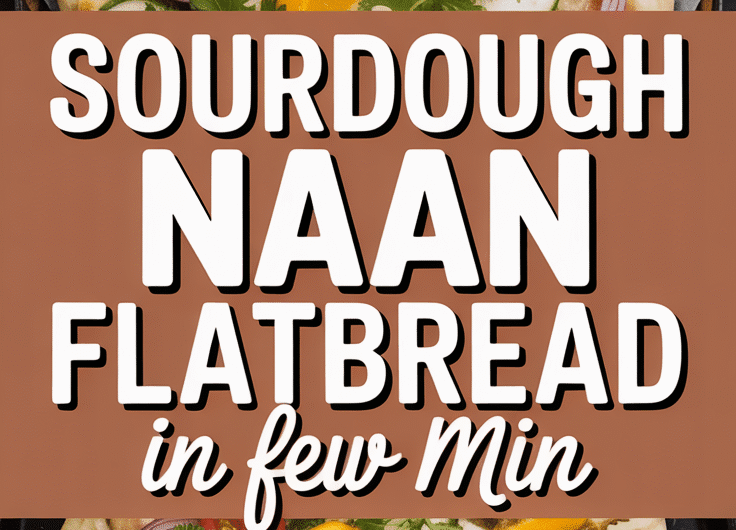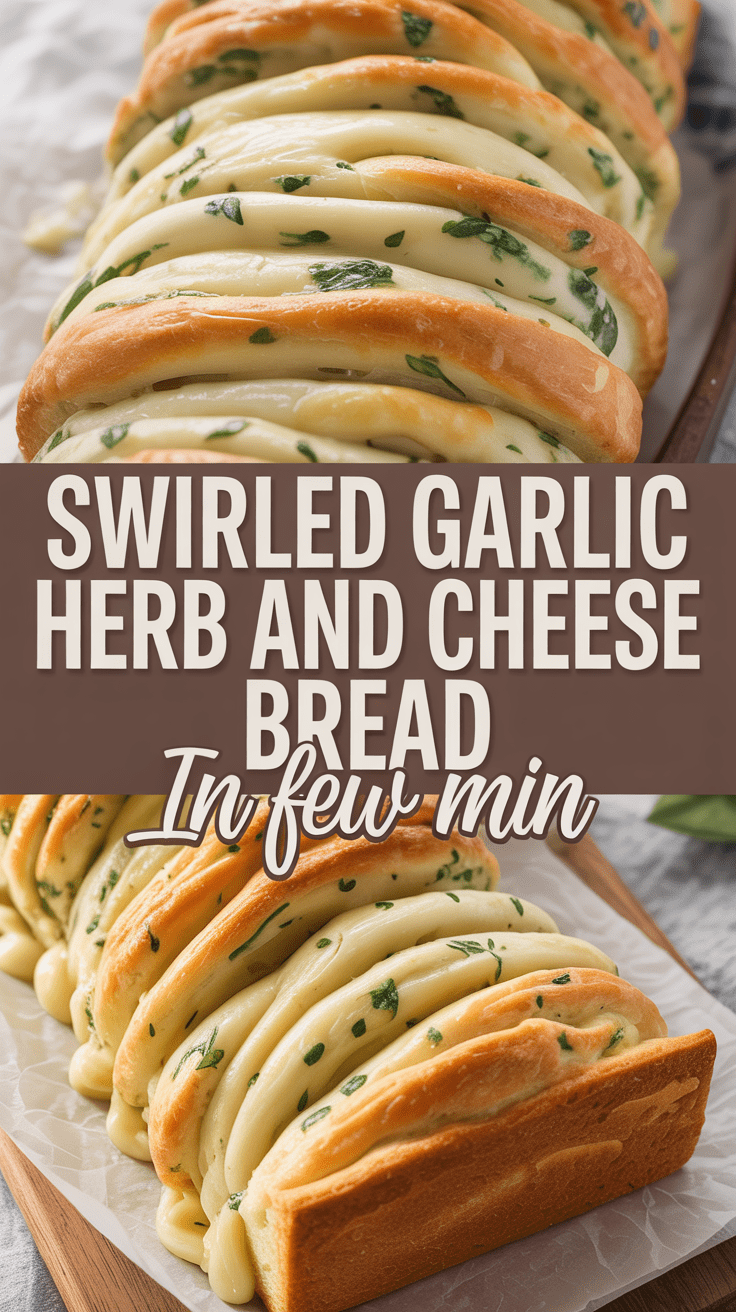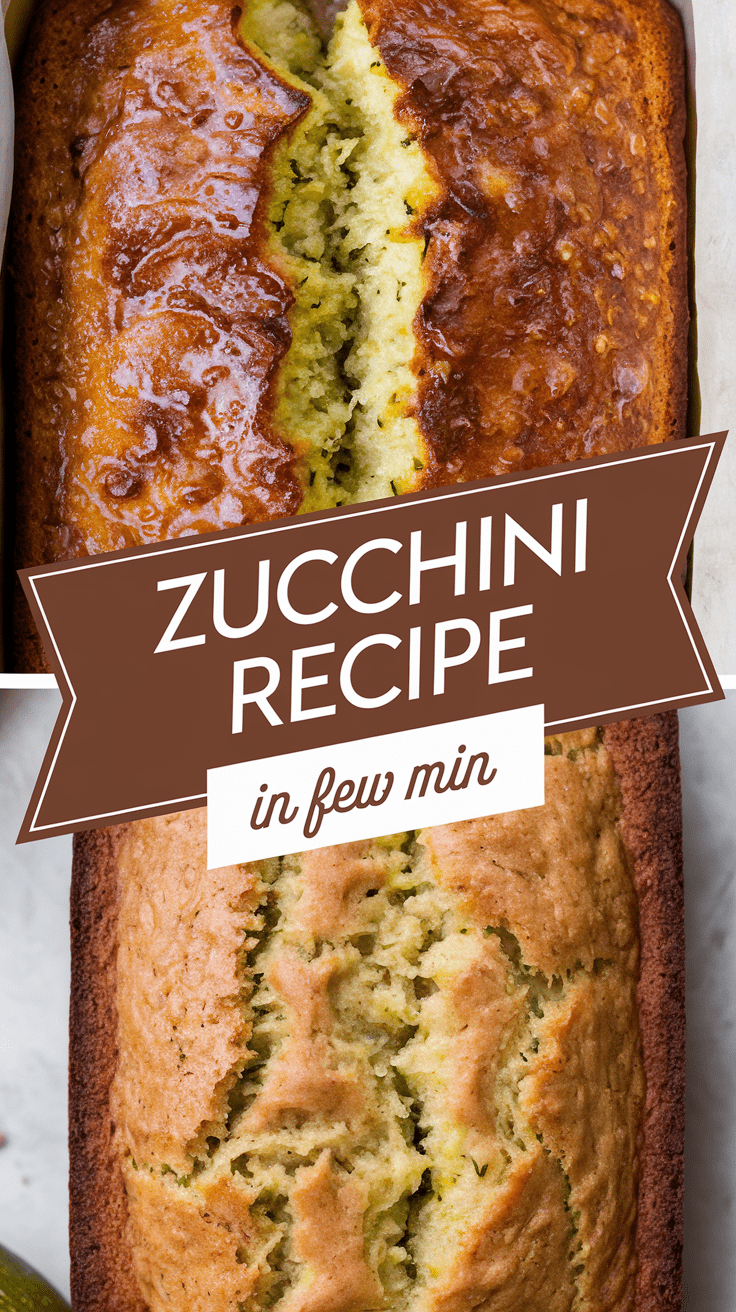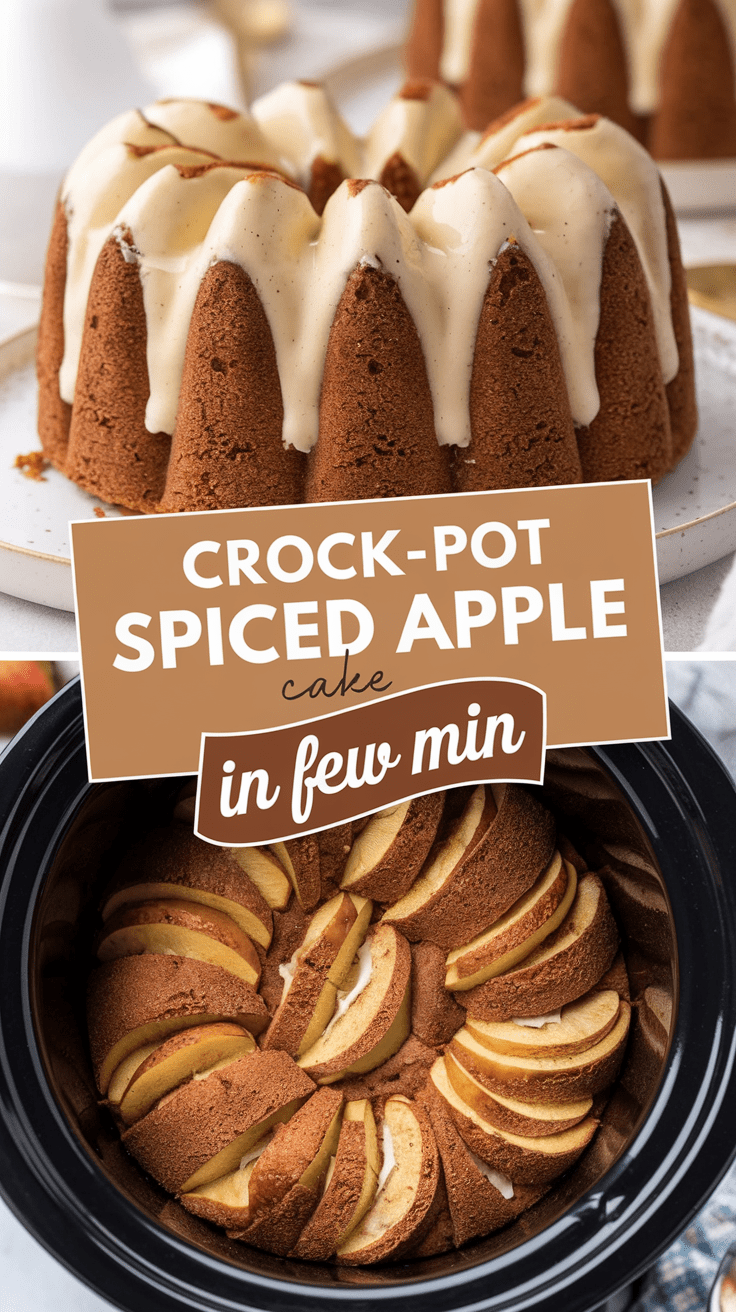Sourdough Naan Flatbread
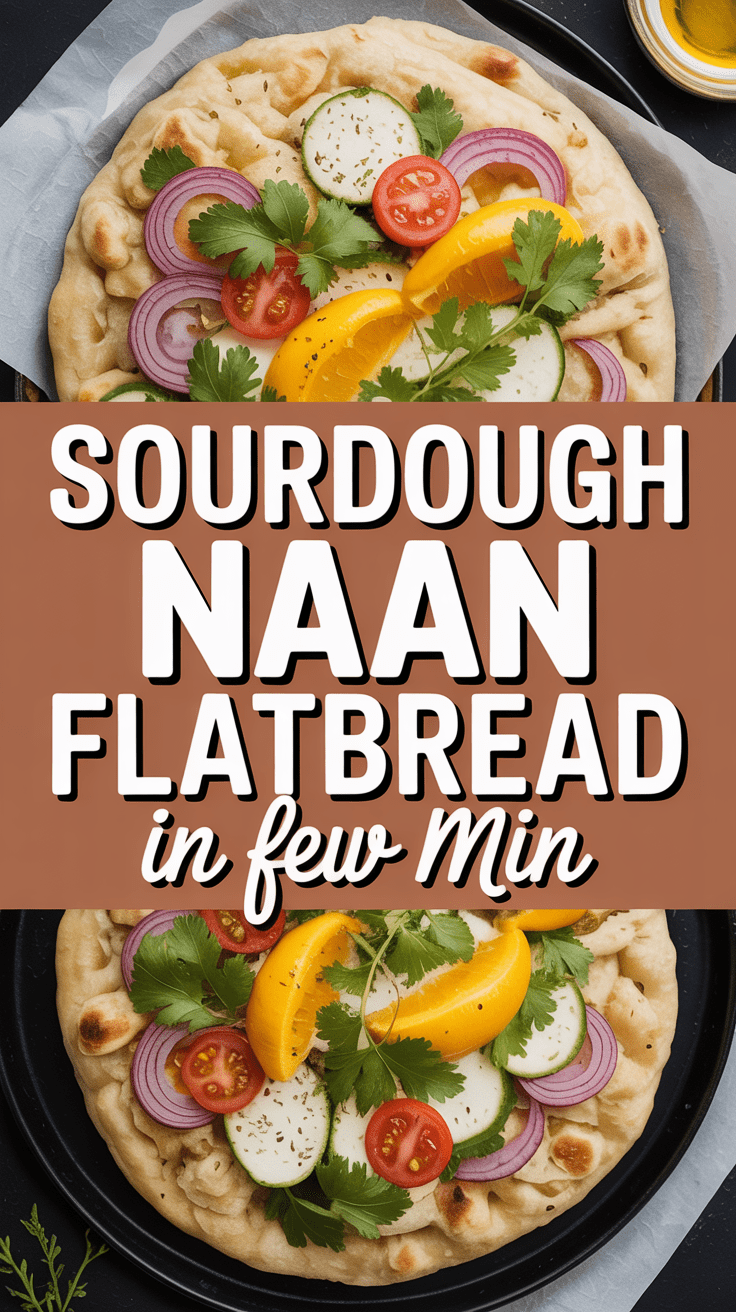
The combination of comfort and craft is exactly the kind of thing I love, and sourdough naan is the top of the list for me. It’s hard to explain why a starter, which has the characteristic smell of a bakery, can turn such a simple mixture into the aforementioned hard-to-resist flatbreads: soft, blistered, and a little chewy. I’ve got to admit that over the years I’ve made heaps and heaps of naan, but this sourdough version? It’s a different kind of joy—it’s a flavor bomb, a character, and that pleasing aroma that makes your kitchen come alive.
What Is Sourdough Naan?
Sourdough naan is a creation from the traditional Indian bread, but made with a natural yeast rise of an active sourdough starter instead of the commercial one. The end product is softer, light than a feather, and slightly more flavorsome than the regular naan. It’s an amazing mixture of old-world fermentation and present-day comfort food—a bread that can be served with a curry equally well as it can with scrambled eggs or simply buttered and honeyed.
Why This Recipe Is Special
This recipe is like a win-win situation: on one hand, it brings back the ancient art of sourdough bread-making and, on the other hand, you get the quick satisfaction of bread made on the stovetop. The loaves made with sourdough need time and patience, but naan gives you instant gratification—you can go from mixing dough to warm and soft bread ready to eat in less than an hour (after fermentation, of course). Along with that, you get the very light, tangy flavor coming from the starter that goes so well with garlic butter or spicy dips.
Why You’ll Love This Recipe
- Incredible flavor: The sourdough gives a mild tang and rich aroma you won’t get from yeast alone.
- Soft and chewy texture: Perfectly tender inside with little crispy bubbles on top.
- No oven needed: All you need is a hot skillet or griddle.
- Versatile: Pairs beautifully with curries, soups, salads, or used as a pizza base.
Tools You’ll Need
Here’s what you’ll want ready before diving in:
- Mixing bowl: For combining your wet and dry ingredients—big enough to allow the dough to rise comfortably.
- Wooden spoon or dough whisk: Helps bring the dough together before kneading.
- Digital scale: Trust me—this makes sourdough baking way easier and more consistent.
- Rolling pin: To roll out even rounds of naan (or use your hands for a rustic shape).
- Cast iron skillet or griddle: This is where the magic happens. It creates those signature charred bubbles.
- Pastry brush: For brushing on melted butter, garlic oil, or ghee.
- Kitchen towel: To cover the dough as it rests and keep the naan soft once cooked.
Ingredients (US + Metric)
For the dough:
- 1 cup (240g) active sourdough starter (fed and bubbly)
- ½ cup (120ml) whole milk, warm
- ¼ cup (60ml) plain yogurt (Greek or regular)
- 2 tablespoons (25g) olive oil or melted butter
- 2 cups (250g) all-purpose flour (plus more for dusting)
- 1 teaspoon (6g) salt
- 1 teaspoon (5g) sugar
For cooking and finishing:
- 2 tablespoons (28g) butter or ghee, melted
- 1–2 garlic cloves, minced (optional, for garlic naan)
- Fresh herbs like cilantro or parsley for garnish
Step-by-Step Instructions
1. Mix the Wet Ingredients
In a big bowl, mix your active sourdough starter, warm milk, yogurt, and olive oil together. Stir thoroughly until everything is a creamy and uniform mixture. I always take a moment here to smell that tangy and comfortable scent—to me, it’s the evidence of the liveliness of your starter and the readiness for its action.
2. Add the Dry Ingredients
Into the bowl, put the flour, sugar, and salt. Mix to have a sticky dough as a result. In the beginning, it won’t be smooth, and it’ll look rough and messy—that’s quite all right. Don’t overthink it.
3. Knead the Dough
Dough is to be turned out onto a lightly floured surface and knead for about 5–7 minutes until it gets that smooth and elastic texture. The dough should be soft but not sticky at all. If you’re having trouble because the dough is too sticky and keeps sticking to your hands, add a little flour.
4. Let It Rise
Put the dough in a clean bowl and lightly oil it. Cover the dough with a damp towel and let it rise in a warm area for about 3–4 hours or until its volume has doubled. If your kitchen is cool, this could take a little bit longer—just be patient.
(Pro tip: For a more intense flavor, put the dough in the fridge overnight. The following day, take it out and let it come to room temperature before using it for cooking.)
5. Divide and Shape
After the dough has risen, gently punch it down and cut it into 6–8 equal parts. Shape each piece into a ball, place a towel over them, and let them rest for 10 to 15 minutes—this relaxes the gluten so they become much easier to roll.
6. Roll Out the Naan
Sprinkle flour on your surface and roll each ball out to resemble an oval that is about ¼ inch (6mm) thick. Don’t worry if they aren’t perfectly shaped—imperfection adds to their charm.
7. Cook the Naan
Heat your cast-iron skillet over medium-high heat until it’s very hot. Place one cast-iron skillet in the oven and heat it over medium-high until it gets very hot. Place naan on a dry pan. In just a few seconds, you will witness bubbles forming, and this is your sign that it is working! 1–2 minutes of cooking, followed by flipping and cooking the other side until golden brown spots appear.
8. Add the Finishing Touch
Mix melted butter (or ghee) with minced garlic and brush it over the hot naan right off the skillet. Sprinkle with herbs if you like. Repeat for the remaining dough.
Serving Ideas
You can never go wrong with naan, but here are a few fun ways to serve it:
- With butter chicken, chickpea curry, or lentil dal
- As a base for flatbread pizza with tomato sauce, mozzarella, and veggies
- Alongside grilled meats or soups
- Topped with hummus, tzatziki, or avocado mash for a snack
Variations & Customizations
- Garlic Naan: Add minced garlic directly to the dough or brush it on after cooking.
- Cheese Naan: Sprinkle shredded mozzarella or paneer before folding and rolling out.
- Whole Wheat Version: Replace half the all-purpose flour with whole wheat flour.
- Vegan Version: Use plant-based milk, coconut yogurt, and olive oil instead of dairy.
Storage & Make-Ahead Tips
- Room temperature: Store cooked naan in an airtight container for up to 2 days.
- Refrigerate: Keeps up to 5 days—just reheat in a dry skillet or oven.
- Freeze: Wrap individually and freeze for up to 2 months. Reheat straight from frozen on a hot pan.
- Make-ahead dough: Store in the fridge for up to 24 hours before rolling out.
Pro Tips & Mistakes to Avoid
- Don’t rush fermentation: The longer the dough rests, the better the flavor.
- Use a hot pan: A lukewarm skillet won’t give you that lovely char.
- Don’t overflour while rolling: Too much flour toughens the texture.
- Brush butter immediately: It helps lock in softness and adds flavor.
- If dough feels too sticky: Chill it for 20 minutes before rolling—it firms up beautifully.
Recipe Summary
Yield: 6–8 naan
Prep Time: 15 minutes
Rise Time: 3–4 hours (or overnight)
Cook Time: 20 minutes
Total Time: 4 hours 30 minutes
Per Serving (1 naan):
Calories: 210 | Carbs: 33g | Protein: 5g | Fat: 6g | Fiber: 1g
Final Thoughts
There’s something deeply satisfying about making sourdough naan from scratch. The moment those bubbles rise in the skillet and that warm, buttery aroma fills your kitchen, you’ll know it was worth every minute. So go ahead, give it a try. Tear into one while it’s still warm, and let that tangy softness convince you this is the only naan recipe you’ll ever need.
Sourdough Naan Flatbread
4
servings15
minutes20
minutes210
kcalSourdough naan is a creation from the traditional Indian bread, but made with a natural yeast rise of an active sourdough starter instead of the commercial one. The end product is softer, light than a feather, and slightly more flavorsome than the regular naan. It’s an amazing mixture of old-world fermentation and present-day comfort food—a bread that can be served with a curry equally well as it can with scrambled eggs or simply buttered and honeyed.
Ingredients
For the dough:
1 cup (240g) active sourdough starter (fed and bubbly)
½ cup (120ml) whole milk, warm
¼ cup (60ml) plain yogurt (Greek or regular)
2 tablespoons (25g) olive oil or melted butter
2 cups (250g) all-purpose flour (plus more for dusting)
1 teaspoon (6g) salt
1 teaspoon (5g) sugar
For cooking and finishing:
2 tablespoons (28g) butter or ghee, melted
1–2 garlic cloves, minced (optional, for garlic naan)
Fresh herbs like cilantro or parsley for garnish
Directions
- Mix the Wet Ingredients
- In a big bowl, mix your active sourdough starter, warm milk, yogurt, and olive oil together. Stir thoroughly until everything is a creamy and uniform mixture. I always take a moment here to smell that tangy and comfortable scent—to me, it’s the evidence of the liveliness of your starter and the readiness for its action.
- Add the Dry Ingredients
- Into the bowl, put the flour, sugar, and salt. Mix to have a sticky dough as a result. In the beginning, it won’t be smooth, and it’ll look rough and messy—that's quite all right. Don’t overthink it.
- Knead the Dough
- Dough is to be turned out onto a lightly floured surface and knead for about 5–7 minutes until it gets that smooth and elastic texture. The dough should be soft but not sticky at all. If you’re having trouble because the dough is too sticky and keeps sticking to your hands, add a little flour.
- Let It Rise
- Put the dough in a clean bowl and lightly oil it. Cover the dough with a damp towel and let it rise in a warm area for about 3–4 hours or until its volume has doubled. If your kitchen is cool, this could take a little bit longer—just be patient.
- (Pro tip: For a more intense flavor, put the dough in the fridge overnight. The following day, take it out and let it come to room temperature before using it for cooking.)
- Divide and Shape
- After the dough has risen, gently punch it down and cut it into 6–8 equal parts. Shape each piece into a ball, place a towel over them, and let them rest for 10 to 15 minutes—this relaxes the gluten so they become much easier to roll.
- Roll Out the Naan
- Sprinkle flour on your surface and roll each ball out to resemble an oval that is about ¼ inch (6mm) thick. Don’t worry if they aren’t perfectly shaped—imperfection adds to their charm.
- Cook the Naan
- Heat your cast-iron skillet over medium-high heat until it’s very hot. Place one cast-iron skillet in the oven and heat it over medium-high until it gets very hot. Place naan on a dry pan. In just a few seconds, you will witness bubbles forming, and this is your sign that it is working! 1–2 minutes of cooking, followed by flipping and cooking the other side until golden brown spots appear.
- Add the Finishing Touch
- Mix melted butter (or ghee) with minced garlic and brush it over the hot naan right off the skillet. Sprinkle with herbs if you like. Repeat for the remaining dough.
Notes
- Don’t rush fermentation: The longer the dough rests, the better the flavor.
Use a hot pan: A lukewarm skillet won’t give you that lovely char.
Don’t overflour while rolling: Too much flour toughens the texture.
Brush butter immediately: It helps lock in softness and adds flavor.
If dough feels too sticky: Chill it for 20 minutes before rolling—it firms up beautifully.


